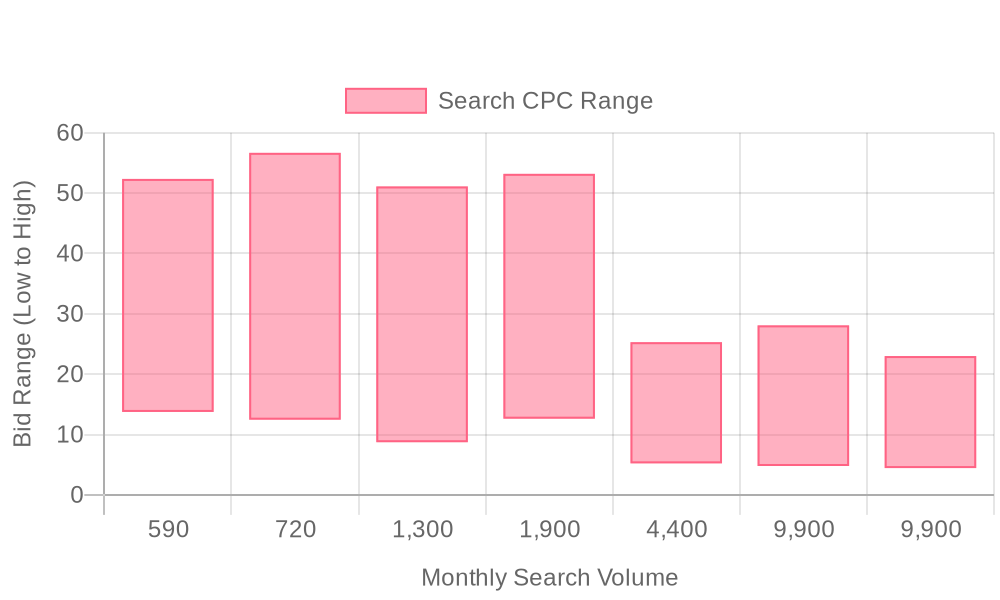
Supercharge your lead generation with a FREE Google Ads audit - no strings attached! See how you can generate more and higher quality leads
Get My Free Google Ads AuditFree consultation

No commitment
Supercharge your lead generation with a FREE LinkedIn Ads audit - no strings attached! See how you can generate more and higher quality leads
Get My Free Google Ads AuditFree consultation

No commitment
Supercharge your lead generation with a FREE Meta Ads audit - no strings attached! See how you can generate more and higher quality leads
Get My Free Google Ads AuditGet My Free LinkedIn Ads AuditGet My Free Meta Ads AuditFree consultation

No commitment
Supercharge your lead generation with a FREE Google Ads audit - no strings attached! See how you can generate more and higher quality leads
Get My Free Google Ads AuditFree consultation

No commitment
In today's landscape, effective B2B marketing for Time and Attendance Systems requires a strategic mix of online and offline channels working in harmony. Companies face challenges such as missing high-value prospects and delayed follow-ups, which can lead to missed opportunities and cooled-off leads. Google Ads sits at the pivotal middle-funnel position, capturing prospects at the moment they're searching for solutions. For Time and Attendance Systems, Google Ads bridges online and offline efforts by:

B2B companies in the time and attendance systems space face a distinct challenge: reaching decision-makers at the precise moment they are researching workforce management solutions. Leveraging Google Ads for Time and Attendance Systems enables marketers to tap into high-intent demand, targeting prospects who may never surface through outbound or organic channels.
Integrating data-driven Google Ads strategies with your broader marketing mix ensures every impression and click is attributable to real business impact. This approach reduces wasted spend and accelerates pipeline velocity by focusing resources on accounts already demonstrating buying signals. For guidance on optimizing attribution, explore the importance of accurate revenue attribution.
With this step-by-step guide, B2B revenue teams can unlock the full potential of Google Ads for employee time tracking and workforce management. If you're ready to put these strategies into action and accelerate your lead generation, get started for free with Sona. By unifying intent signals, optimizing for conversion, and reinforcing every campaign with actionable data, marketers can consistently generate pipeline and accelerate growth in a complex, competitive industry.

Time and attendance systems face the unique challenge of reaching HR decision-makers who demand tailored solutions. Google Ads excels at capturing this specialized audience by surfacing your message exactly when these prospects are searching for answers, ensuring your solution enters consideration at the point of highest intent. For an overview of how platforms can automate employee tracking and improve workforce management, see this cloud-based time and attendance system.
Winning high-margin projects often requires extending reach beyond your nurtured email lists or cold outreach. With intent-based targeting, marketers can intercept prospects who may never have engaged with your brand before, delivering precisely matched offers that prompt immediate action and move leads swiftly down the funnel.
Peak hiring periods, regulatory changes, or expansion into new regions frequently create spikes in demand that traditional marketing cannot address quickly. Google Ads allows for agile campaign activation in these windows, ensuring you capitalize on urgent needs and keep your pipeline filled with qualified, sales-ready leads.
A critical advantage is the ability to measure every step from initial click to closed deal, giving revenue teams closed-loop analytics. This granular insight enables precise follow-up and resource allocation, so the most promising accounts receive priority. With unified data across ad engagement, website behavior, and CRM outcomes, teams can continuously refine audience segments, optimize bidding, and maximize Google Ads ROI for time systems in a measurable, repeatable way.


Identifying untapped growth opportunities in the time and attendance systems sector starts with granular targeting. Vertical keyword targeting unlocks access to highly specialized HR audiences, ensuring ads reach decision-makers looking for precise solutions rather than being diluted among generic search terms. This approach not only improves click-through rates but also attracts prospects who are actively researching Google Ads for time and attendance systems, Google Ads for attendance tracking, and Google Ads for HR solutions. By leveraging enriched audience data, marketers can pinpoint visitors by company, function, or industry segment, breaking free from the limitations of anonymous web traffic and basic analytics.
Competitor gap analysis reveals overlooked market segments where legacy vendors may be slow to respond or rely on manual sales follow-up. By monitoring competitors’ campaigns and keyword gaps, you can identify growing verticals or emerging compliance needs left unaddressed. With real-time intent signals from site visits or high-value content downloads, marketing teams can dynamically shift ad budget toward accounts showing the strongest buying signals. To see how time and attendance vendors are automating employee tracking and workforce management, explore this overview of a cloud-based time and attendance system. This ensures that spend is always prioritized for the highest-converting opportunities within Google Ads for workforce management or employee time tracking.
Strategic ad placements on industry-specific forums and directories further enhance lead quality by reaching companies immersed in HR technology discussions and best practices. Running sponsored content or display ads in these specialized environments identifies organizations investing time in evaluating advanced solutions. As leads engage with whitepapers, compliance checklists, or ROI calculators, dynamic retargeting nurtures them with relevant follow-up—aligning content offers with their stage in the buyer’s journey. Marketers can automate audience updates as contacts move through research, demo, and proposal phases, ensuring messaging remains relevant and maximizing Google Ads ROI for time systems. This data-driven approach enables ongoing optimization as prospects’ intent and engagement evolve. If you’re ready to put these strategies to work, get started for free with Sona.
Audience segmentation stands as a foundational tactic for driving high-impact Google Ads for Time and Attendance Systems. By separating and targeting by vertical, buyer readiness, and engagement history, B2B teams increase campaign efficiency and unlock more precise messaging that resonates with decision makers. For more strategies on segmenting and targeting, explore this playbook on buying stage segmentation.
If you're ready to put advanced segmentation into action, get started for free with Sona.

| Industry | Keyword | Monthly Search Volume | Competition Level | Low Bid | High Bid |
| Time and Attendance Systems | time clock software for small business | 590 | LOW | 13.74 | 52.36 |
| Time and Attendance Systems | clock in clock out system | 720 | HIGH | 12.46 | 56.68 |
| Time and Attendance Systems | time and attendance systems | 1300 | MEDIUM | 8.73 | 51.11 |
| Time and Attendance Systems | employee clock in system | 1900 | HIGH | 12.63 | 53.2 |
| Time and Attendance Systems | time and attendance | 4400 | LOW | 5.23 | 25.3 |
| Time and Attendance Systems | adp time and attendance | 9900 | LOW | 4.79 | 28.09 |
| Time and Attendance Systems | adp time clock | 9900 | LOW | 4.44 | 23 |
Effective Google Ads campaigns for time and attendance systems depend on a keyword strategy that adapts to the shifting needs of HR leaders, IT decision-makers, and operations directors. A deliberate blend of broad, high-intent keywords and more granular, niche search terms captures both mainstream buyers and specialized segments searching for specific compliance, integration, or automation features.
This multi-tiered approach enables revenue teams to reach buyers at every stage of the funnel. By leveraging real-time intent signals, marketers can automatically prioritize spend on campaigns that attract accounts showing increased buying activity. When connected with unified data platforms, these keyword strategies allow for dynamic audience creation, adjusting target lists as prospects move from research to demo requests and beyond. This ensures budget is always focused on those most likely to convert, maximizing both reach and relevance in a competitive B2B marketplace. To experience these capabilities, get started for free with Sona.
B2B marketers driving demand for time and attendance systems need keyword lists that reflect every nuance of their solution offerings. Segmenting keywords by core services—such as employee time tracking, workforce management, or attendance analytics—allows for granular campaign oversight and more actionable insights at the account level. For an in-depth look at cloud-based systems, explore this overview of a cloud-based time and attendance system, which highlights automation and improved workforce management. This structure ensures that every click and impression is mapped back to a relevant business goal, making budget allocation and performance analysis straightforward.
Localizing keyword clusters is essential for capturing intent signals tied to region-specific compliance or labor needs. For example, incorporating city or state modifiers addresses buyers searching for workforce management solutions tailored to local requirements. Negative keyword filters help marketers avoid irrelevant traffic, ensuring campaigns exclude generic searches that dilute analytics and lead to wasted spend. The ability to enrich these lists with real-time firmographic and behavioral data, as seen with advanced visitor identification, further refines targeting by surfacing accounts that match your ideal customer profile.
Effective ad copy for Google Ads for Time and Attendance Systems must speak directly to the priorities and challenges faced by HR leaders and operations managers. Messaging that addresses pain points—such as manual data entry, compliance risk, or fragmented reporting—resonates deeply with decision-makers seeking to unify their workforce data. For practical tips on maximizing campaign timing, review this blog post on Google Ads ad scheduling, which explores how strategic timing can boost ROI. By weaving in trust markers like case studies, industry certifications, and verified savings claims, advertisers establish credibility and foster confidence among discerning B2B audiences.
Layering incentives, such as complimentary audits or demo offers, elevates engagement for high-value segments. Ad extensions that spotlight features like automated scheduling or integration with payroll systems add further relevance and drive higher click-through rates. When enriched audience insights are used to personalize copy dynamically, marketers can adapt messaging for each stage of the buying journey, ensuring prospects always see the most relevant value proposition.
Successful Google Ads for attendance tracking campaigns hinge on seamless keyword-to-landing page alignment. Each landing page should reflect the specific service or solution being advertised, using dynamic content to adapt as user signals and intent evolve. For a comparison of top-rated platforms, consider this review of the best time and attendance systems for small businesses, which can help inform your landing page differentiation. This contextual approach ensures every visitor sees precisely the information that matches their search, increasing trust and accelerating the path to conversion.
Segmenting landing pages by offering—such as employee scheduling, mobile time tracking, or compliance automation—caters to the diverse needs and buying behaviors of enterprise, mid-market, and SMB buyers. Streamlined conversion paths, such as single-step demo requests or integrated calendar scheduling, minimize drop-off and support rapid follow-up by sales teams. When marketers leverage real-time audience enrichment, landing page experiences can be tailored not only by service but also by account, industry, or buying stage, driving deeper engagement and higher lead quality.
Ongoing optimization of Google Ads for workforce management demands precise measurement and agile iteration. Conversion tracking should focus not just on volume but on quality, highlighting the freshest, highest-intent profiles surfacing through your campaigns. For guidance on integrating ad and time tracking, see this guide to integrating Google Ads with Monitask for actionable analytics and optimization insights. With advanced attribution, including both online and offline interactions, marketers can measure true ROI for time systems and pinpoint which channels and touchpoints drive pipeline growth.
Smart bidding strategies, informed by live intent and engagement signals, allow for real-time budget shifts to the segments and keyword themes delivering the strongest results. By continuously A/B testing ad copy, landing page elements, and audience segments, marketers ensure campaigns remain responsive to shifting buyer behavior and market trends. Integrating CRM and ad platforms ensures that enriched audience data and campaign learnings sync automatically, keeping targeting and messaging aligned with the latest revenue priorities. Ready to optimize your campaigns further? Get started for free with Sona.

Promoting your time and attendance systems requires a blend of precision targeting and adaptive messaging. Modern B2B revenue teams see higher conversion rates when they segment outreach around real-time buying signals and intent data.
Ready to expand your presence and drive more qualified pipeline? Get started for free with Sona.
Effectively leveraging Google Ads for promoting time and attendance systems can transform your marketing strategy, aligning your capabilities with the needs of your audience. By understanding the nuances of ad scheduling, budgeting, and precise audience targeting, you can maximize your impact and drive meaningful engagement.
Throughout this discussion, we explored the challenges of optimizing Google Ads for time and attendance solutions, delved into strategies for crafting compelling ad content, and highlighted the importance of focusing on the right audience. These insights are pivotal for enhancing your advertising efforts and ensuring that your marketing investments yield substantial returns.
With these strategies in mind, you are well-equipped to elevate your marketing approach and achieve your business goals. Embrace the opportunity to refine your campaigns and witness the transformative power of targeted advertising in reaching new heights.
Ready to explore these strategies with a unified platform that brings data-driven insights to the forefront? Start for free to experience the capabilities that can revolutionize your approach to marketing and drive your success forward.
Best practices include using data-driven methodologies to optimize campaigns, targeting specific keywords and audiences, aligning ad messaging with landing pages, and integrating cross-channel data for better targeting and ROI.
Optimize your budget by focusing on high-intent accounts, using advanced bidding strategies like Target CPA or ROAS, and leveraging real-time audience insights to prioritize spend on accounts showing buying signals.
Target a mix of high-volume keywords like 'Google Ads for Time and Attendance Systems' and niche phrases such as 'Google Ads for employee time tracking' to capture both broad interest and specific needs.
Set up ad scheduling by analyzing data to determine the best times of day and days of the week for reaching your audience, ensuring your ads are shown when decision-makers are most likely to engage.
Track metrics such as cost-per-acquisition, conversion rates, ROI, and engagement metrics from both online and offline interactions to measure success and refine your strategies.
Join results-focused teams combining Sona Platform automation with advanced Google Ads strategies to scale lead generation

Connect your existing CRM

Free Account Enrichment

No setup fees
No commitment required

Free consultation

Get a custom Google Ads roadmap for your business
Join results-focused teams combining Sona Platform automation with advanced Meta Ads strategies to scale lead generation

Connect your existing CRM

Free Account Enrichment

No setup fees
No commitment required

Free consultation

Get a custom Google Ads roadmap for your business
Join results-focused teams combining Sona Platform automation with advanced LinkedIn Ads strategies to scale lead generation

Connect your existing CRM

Free Account Enrichment

No setup fees
No commitment required

Free consultation

Get a custom Google Ads roadmap for your business
Join results-focused teams using Sona Platform automation to activate unified sales and marketing data, maximize ROI on marketing investments, and drive measurable growth

Connect your existing CRM

Free Account Enrichment

No setup fees
No commitment required

Free consultation

Get a custom Google Ads roadmap for your business
Over 500+ auto detailing businesses trust our platform to grow their revenue
Join results-focused teams using Sona Platform automation to activate unified sales and marketing data, maximize ROI on marketing investments, and drive measurable growth

Connect your existing CRM

Free Account Enrichment

No setup fees
No commitment required

Free consultation

Get a custom Google Ads roadmap for your business
Over 500+ auto detailing businesses trust our platform to grow their revenue
Join results-focused teams using Sona Platform automation to activate unified sales and marketing data, maximize ROI on marketing investments, and drive measurable growth

Connect your existing CRM

Free Account Enrichment

No setup fees
No commitment required

Free consultation

Get a custom Google Ads roadmap for your business
Over 500+ auto detailing businesses trust our platform to grow their revenue
Our team of experts can implement your Google Ads campaigns, then show you how Sona helps you manage exceptional campaign performance and sales.
Schedule your FREE 15-minute strategy sessionOur team of experts can implement your Meta Ads campaigns, then show you how Sona helps you manage exceptional campaign performance and sales.
Schedule your FREE 15-minute strategy sessionOur team of experts can implement your LinkedIn Ads campaigns, then show you how Sona helps you manage exceptional campaign performance and sales.
Schedule your FREE 15-minute strategy sessionOur team of experts can help improve your demand generation strategy, and can show you how advanced attribution and data activation can help you realize more opportunities and improve sales performance.
Schedule your FREE 30-minute strategy sessionOur team of experts can help improve your demand generation strategy, and can show you how advanced attribution and data activation can help you realize more opportunities and improve sales performance.
Schedule your FREE 30-minute strategy sessionOur team of experts can help improve your demand generation strategy, and can show you how advanced attribution and data activation can help you realize more opportunities and improve sales performance.
Schedule your FREE 30-minute strategy sessionOur team of experts can help improve your demand generation strategy, and can show you how advanced attribution and data activation can help you realize more opportunities and improve sales performance.
Schedule your FREE 30-minute strategy session





Launch campaigns that generate qualified leads in 30 days or less.
